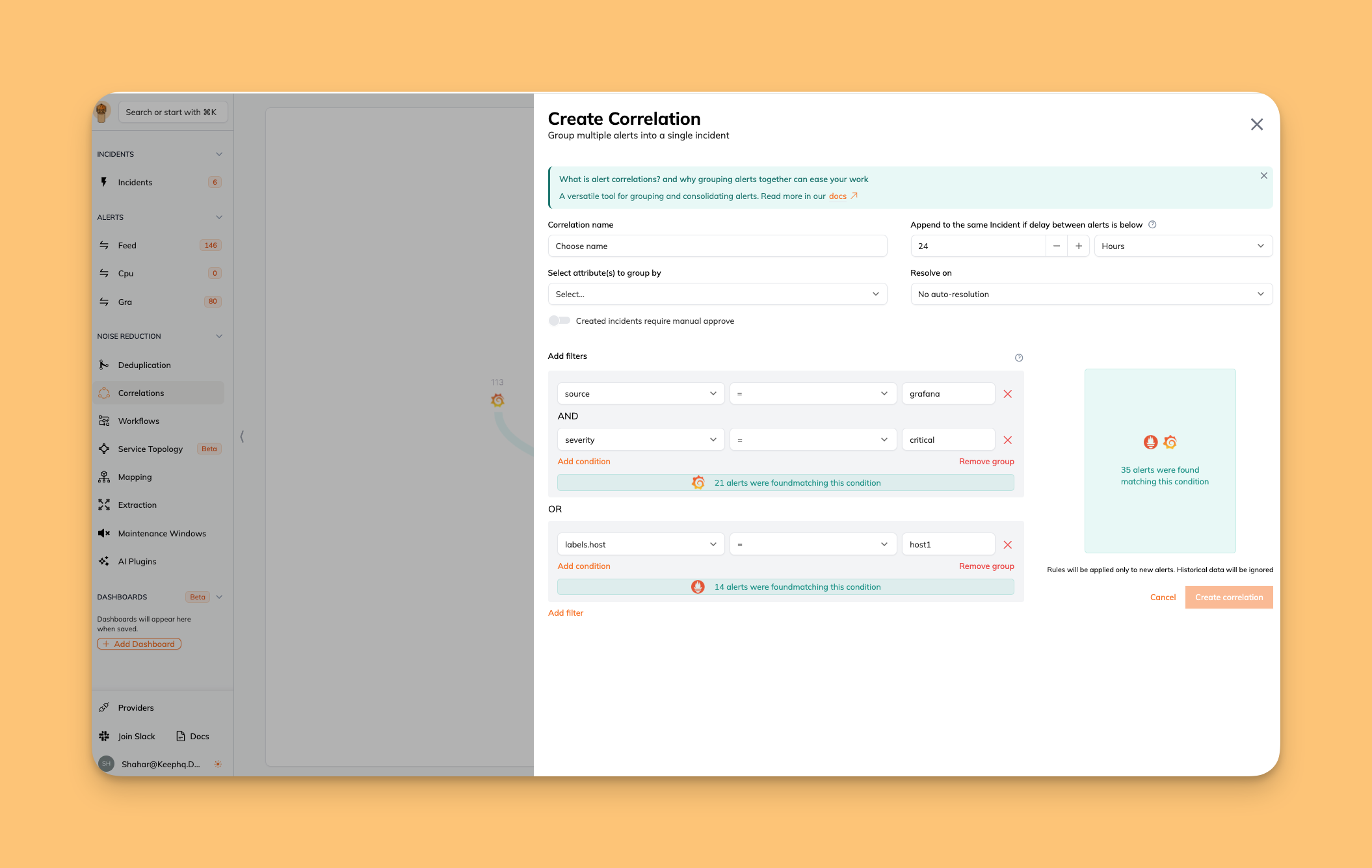
Core Concepts
- Rule definition: A rule in Keep is a set of conditions that, when met, creates an incident or incident-candidate.
- Alert attributes: These are characteristics or data points of an alert, such as source, severity, or any attribute an alert might have.
- Conditions and logic: Rules are built by defining conditions based on alert attributes, using logical operators (like AND/OR) to combine multiple conditions.
Creating Correlation Rules
Creating a rule involves defining the conditions under which an alert should be categorized or actions should be grouped.- Accessing the Correlation Engine: Navigate to the Correlation section in the Keep platform.
- Defining rule criteria:
- Name the rule: Assign a descriptive name that reflects its purpose.
- Set conditions: Use alert attributes to create conditions. For example, a rule might specify that an alert with a severity of ‘critical’ and a source of ‘Prometheus’ should be categorized as ‘High Priority’.
- Logical grouping: Combine conditions using logical operators to form comprehensive rules.
- Manual approve: Create Incident-candidate or full-fledged incident.
Dynamic Incident Naming
The correlation engine supports dynamic incident naming based on alert attributes. This allows you to create more meaningful and context-aware incident names that reflect the actual alert data.Template Variables
You can use template variables in your incident name using the{{ alert.attribute }} syntax. These variables are replaced with actual values from the alerts. For example:
{{alert.labels.host}}- References the host from alert labels{{alert.service}}- References the service name from the alert
Behavior with Multiple Alerts
When an incident contains multiple alerts:- Values from all alerts are automatically concatenated with commas
- Duplicate values are automatically deduplicated
- If a new alert adds a unique value, the incident name is updated to include it
Dynamic Name Example
Template: “Service Issue on{{alert.labels.host}}”
First alert
Examples
- Metric-based alerts: Construct a rule to pinpoint alerts associated with specific metrics, such as high CPU usage on servers. This can be achieved by grouping alerts that share a common attribute, like a ‘CPU usage’ tag, ensuring you quickly identify and address performance issues.
- Feature-related alerts: Establish rules to create incident by specific features or services. For instance, you can start incident based on a ‘service’ or ‘URL’ tag. This approach is particularly useful for tracking and managing alerts related to distinct functionalities or components within your application.
- Team-based alert management: Implement rules to create incidents according to team responsibilities. This might involve grouping based on the systems or services a particular team oversees. Such a strategy ensures that alerts are promptly directed to the appropriate team, enhancing response times and efficiency.

